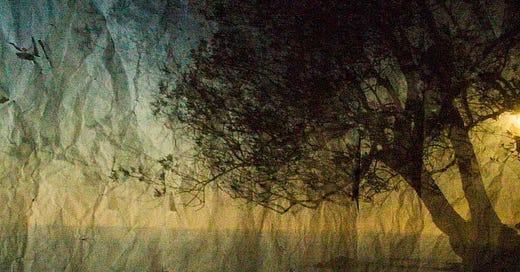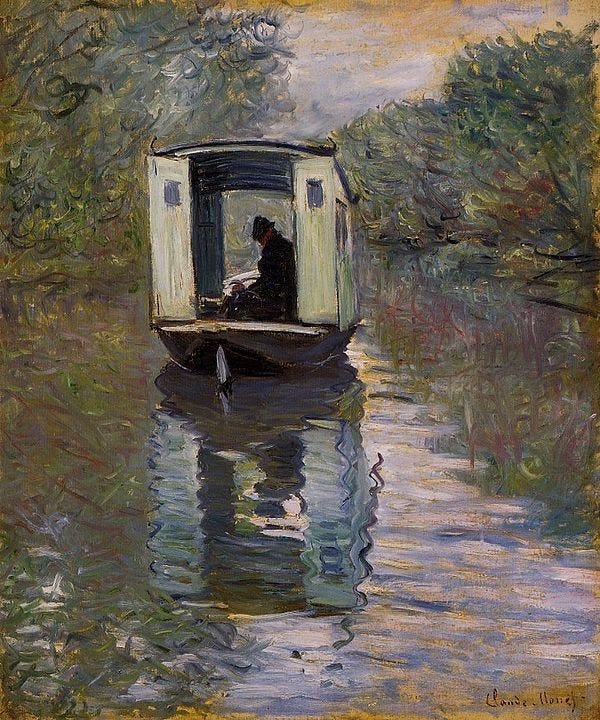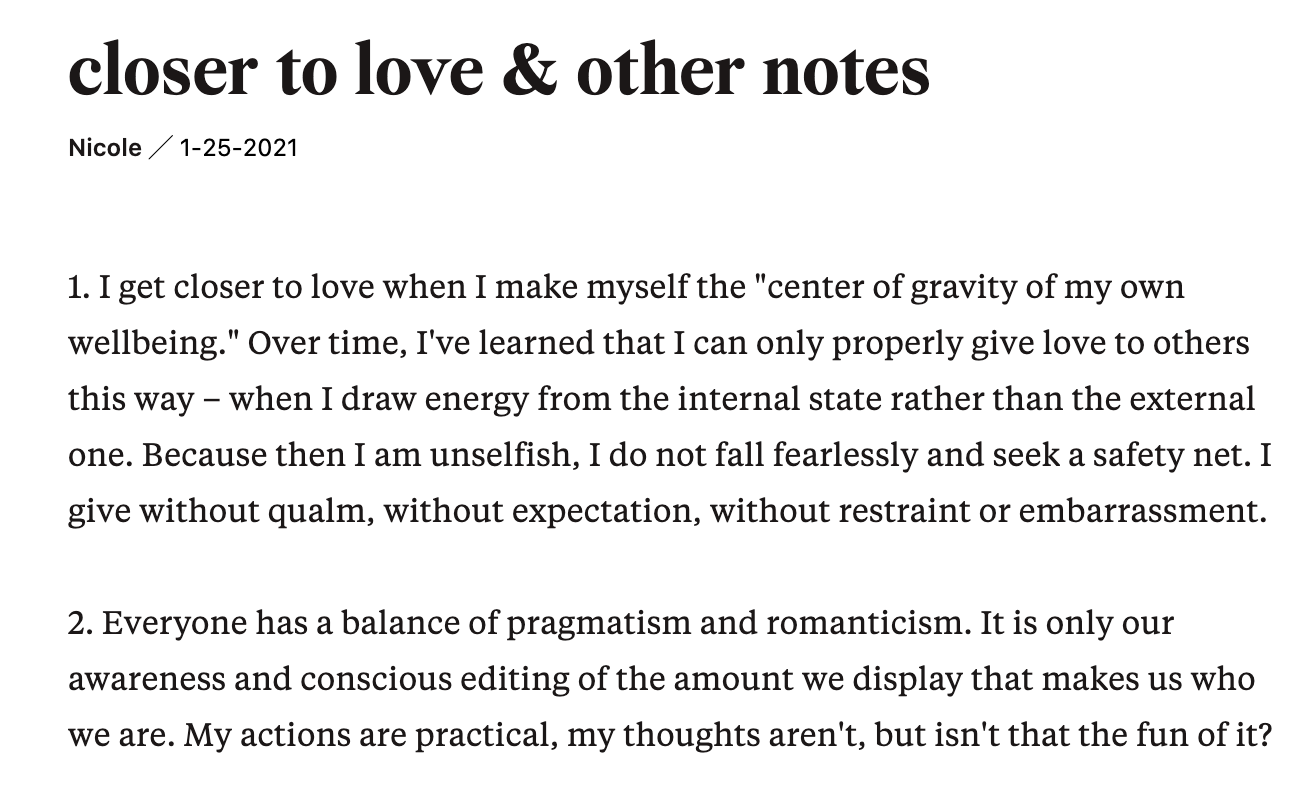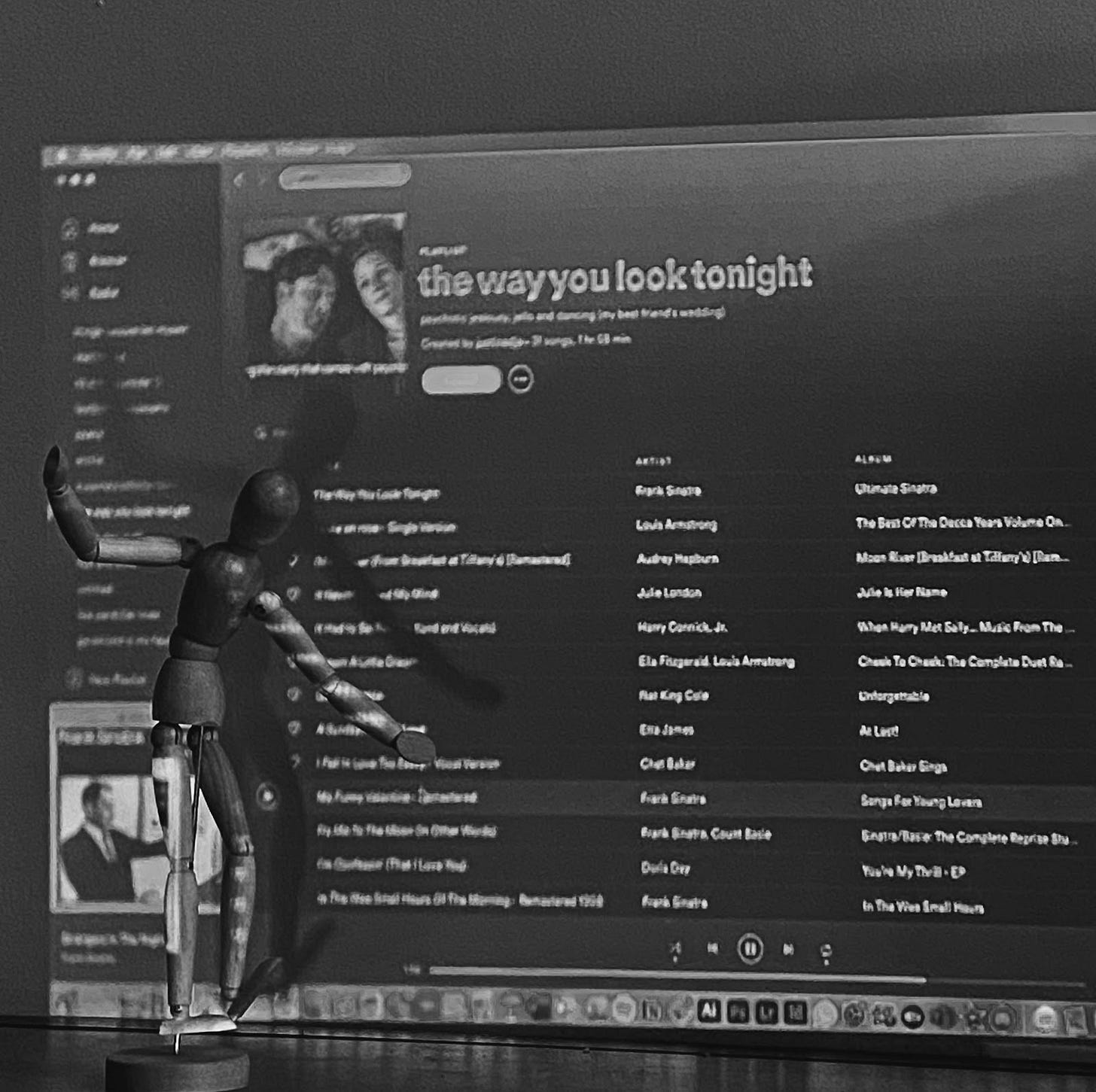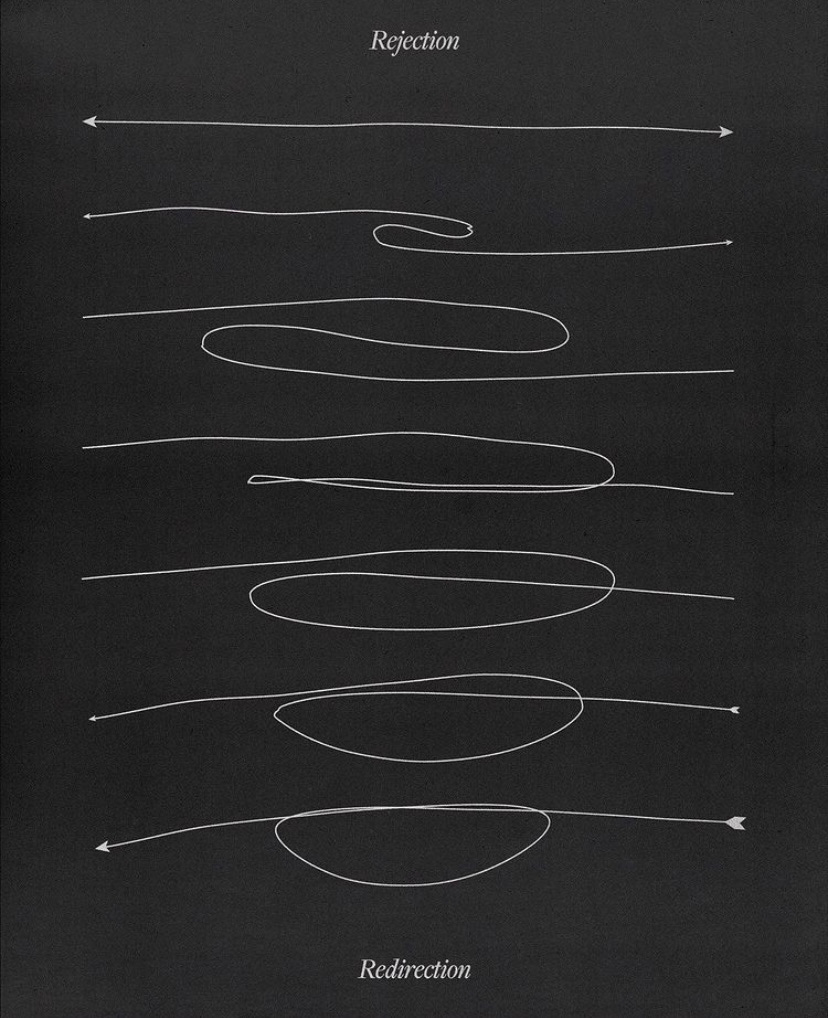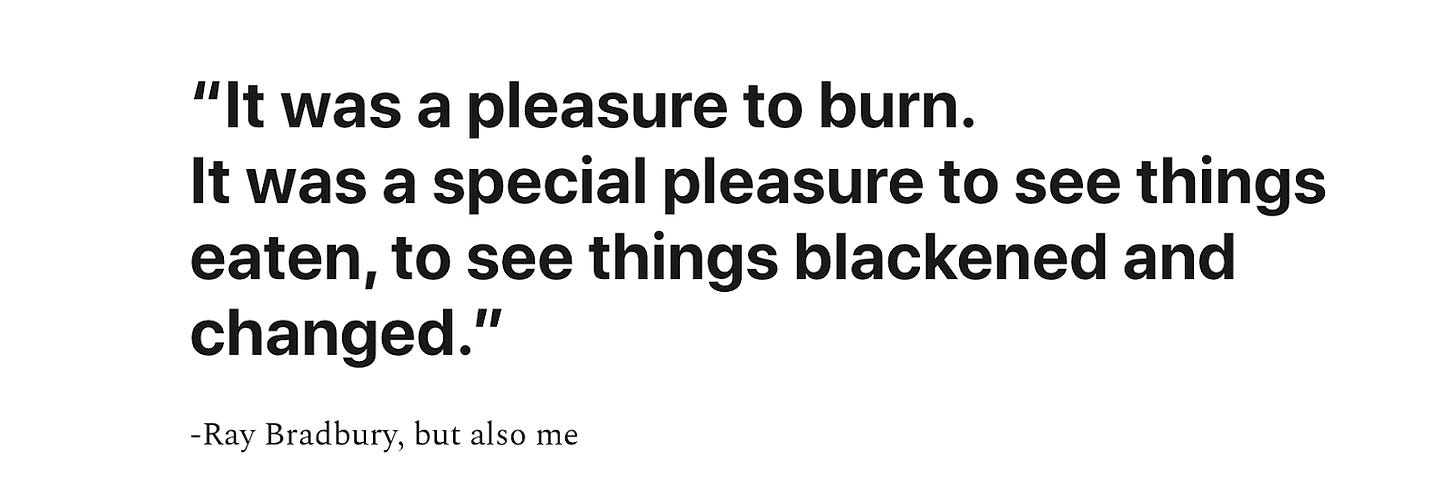Hi friends,
Hello from the cold! In the spirit of transparency, we admit that this week’s newsletter was a little harder to write. But to practice what we preach – we want to share real, not perfect, things.
Letter 33 is an amalgamation of scattered observations: sporadic journal entries, lists from the Notes app. We’ll be chatting about art, intentionality, and our mutual love for jazz music.
J:
“Upcoming Event: afternoon walk”
Since coming back to Philly, I’ve been keeping myself entertained by going on walks. They’ve become the only real timestamp to punctuate the otherwise unchanging days. Beyond entertainment, it might be more accurate to say that walks are my main source of sanity these days. A literal change of pace from the many motionless hours spent slumped over at my desk. A brief coffee run, a walk down to the river, another quick peruse through the snack aisle – anything to change the scene.
This desire to find newness – of things to do, or see, or feel – reminds me of the many ways humans are wired to hunt for novelty. For example, there is a phenomenon in visual perception known as Troxler Fading: if we fixate on a point for too long, then other unchanging elements of our visual field begin to disappear. In other words, if the stimulus fails to change, cells may cease to respond.
This idea might be one way to explain the simple joys of a walk. I remember reading Alexandra Horowitz’s On Walking this summer, intrigued by the way she elevates the act of observation to something of an art form:
“Together, we became investigators of the ordinary, considering the block — the street and everything on it—as a living being that could be observed. In this way, the familiar becomes unfamiliar, and the old the new.”
I’m beginning to understand what she means. During walks, there is a re-packaging of novelty: to see that novelty is more than just big updates and busy schedules. Maybe it’s taking a wrong turn and discovering a new street, or noticing new buildings, or greeting different passersby.
The other day, a friend and I were laughing about the way we actively schedule walks on our calendars now. Even just a year ago, the notion that we would set aside the time to do something so unremarkable seems unheard of. But perhaps this is also a way of finally recognizing that novelty has always been around us, so long as we choose to pay attention. Maybe all it takes is a short walk.
N:
Notes
Hi friends, no huge ideas from me this week so here’s some small ones – I hope you understand.
Note One: Sensory Things
There’s a lot to write about but nothing feels conclusive – soft boiled eggs in the morning, small interactions, the water by the Schuylkill that sparkles lightly, snowfall and its accompanying quietness. In the museum today I was struck by a painting by Monet, titled ‘The Studio Boat’: Monet’s floating painting boat where he would paint views from the River Seine in the Argenteuil district that were otherwise inaccessible by foot. I can just picture Monet inside the boat, easel set up, a column of cool air flowing through. It must feel freeing. I feel a slow heat right in the center of my chest. I am running towards the river and every limb feels like it's on fire, but in a good way. My experiences recently have felt very new, unpolished, organic. My note from this week reads: I'm not feeling stagnant anymore, I am feeling ready for growth.
Note Two: Intentional attention
In GNI’s newsletter a while back, they suggested we think of 6 words we wanted 2021 to be defined by. One of their words was ‘present.’ Being present to me is a combination of intention and attention. Setting an intention to relax and slow down, and paying attention to the world as you do. Both words come from the root word tendere: stretching towards. I picture it as stretching towards the world the way a branch reaches for light, unearthing every feeling and bringing it into view. I’ve realized that you can only truly understand something when you’ve noticed it within you and spoken it out loud. Today I am thinking of the way the sun warms the skin, the undercurrent of recurring emotions, the interconnectedness of people. Ortega: “Tell me what you pay attention to and I will tell you who you are.”
Short snippets of new writing
from closer to love and other notes
J:
evenings in the apartment
Fridays have become the unofficial Kopi Club date night. This week, we ordered take-out, (re)watched My Best Friend’s Wedding (gets me every time), and concluded the evening by recreating a jazz club in our living room.
Here’s the old playlist I made as an ode to one of my favorite 90s rom-coms:
N:
Books and Podcasts
Audiobooks:
I’ve been loving using the Libby App: it’s an absolute game-changer for reading/listening to audiobooks (if you have a library membership in your home country!) My first book was The Glass Hotel, an absolutely riveting novel to listen to – about greed, guilt, a ponzi scheme, and how deeply lives can be intertwined. I’m now onto Circe by Madeleine Miller (I first read it in book form but the audiobook is also really beautiful to listen to, she has such a pretty voice.)
Podcasts:
The Conversational Nature of Reality with Sam Harris and poet David Whyte: I have an appreciation for people who can really clearly articulate their thoughts, and these two are no exception.
Here’s an excerpt I typed out because we repeat this sentiment often in Kopi Club:
“I began to realize that the deeper my level of attention to the world, the more that my identity as a person changed, also deepened, and widened. A person’s identity doesn’t depend on their inherited beliefs, your identity depends on how much you pay attention to people other than you. The great thing about the deeper states of attention is that they lead you to the timeless, the untrammeled.” – David Whyte
J:
On the production of memories
At the recommendation of my thesis advisor, I’ve been spending most mornings doing an hour of research for my senior thesis – while the advice was really just intended to make sure I actually get shit done, it’s also nice not to start the day off with more doom-scrolling.
One artist that I came across was Viviana Peretti, and her “nostalgia in blue”series. Inspired by the original camera obscura, Peretti recreated a viewing chamber in which viewers are immersed in scenes of Italy’s Ligurian coast. On Peretti’s series, Caroline Brothers writes:
“To linger among the shadows inside Peretti’s camera obscura is to sense how memory is born: in reverse and upside down, mysterious and strange. Her camera – this simple hut with its blacked-out windows – is something like a telescope that looks back to the origins of the universe. It carries us back to that moment when we first began to formulate memory, when the world loomed large and flickering and ungraspable, to that time where we moved without words.”
N:
From Italo Calvino’s lectures at Harvard University:
Calvino’s final lectures, titled ‘Six Memos for the Next Millennium’ were about 6 traits he believed writing and life should include:
Lightness
Quickness
Exactitude
Visibility
Multiplicity
All that is known of the sixth lecture is that it was to be on consistency.
I think those words are particularly striking, especially lightness and visibility – to uplift, to reveal, rather than hide. I like that sentiment.
& A Shared Learning
We recently went on a walk with a friend, Shreya (hi girl!), and she brought us to a small corner shop called Avril 50. When you first walk in, you’re hit with the warm aroma of coffee. The room is filled with an eclectic mix of things – a myriad of tea flavors, old magazines (including Frankie, a magazine we read growing up), architecture digests, hand-crafted chocolates, funky European postcards. According to a feature by 34th Street about the owner, John Shahidi, Avril 50 has remained unchanged for 34 years.
We love how inside the shop, trends cease to exist; it is simply a collection of things the owner has always loved.
J:
“How do you calculate upon the unforeseen? It seems to be an art of recognizing the role of the unforeseen, of keeping your balance amid surprises, of collaborating with chance, of recognizing that there are some essential mysteries in the world and thereby a limit to calculation, to plan, to control.” – Rebecca Solnit, A Field Guide to Getting Lost
which reminded me of this graphic by @stefyloret
N:
A locus of possibility
“Kepler knew what we habitually forget—that the locus of possibility expands when the unimaginable is imagined and then made real through systematic effort.” – Maria Popova
J:
Front Burner
Inspired by a recent Moon Lists prompt - a catalogue of what’s front of mind
Josef Albers’ vinyl covers
Rohmer interiors
Schitt’s Creek (why the hell did I get on the bandwagon so late)
“Deipnosophist” - a new word I learned this week, meaning ‘a person skilled in the art of dining and dinner-table conversation’. In a pre-COVID world, I had hopes of spending my senior year hosting dinner parties with friends to celebrate this last semester of college. Dreams of becoming a deipnosophist have now been put on hold.
Photographs of a young Joan Didion
N:
Nicole’s Inventory of the Week:
Art of the Week by Wendy MacNaughton
A Post I’m Bringing Back to Share:
Lyz’s writing: it was a pleasure to burn about burning her old wedding dress:
Poem of the Week:
Hugs,
J & N

